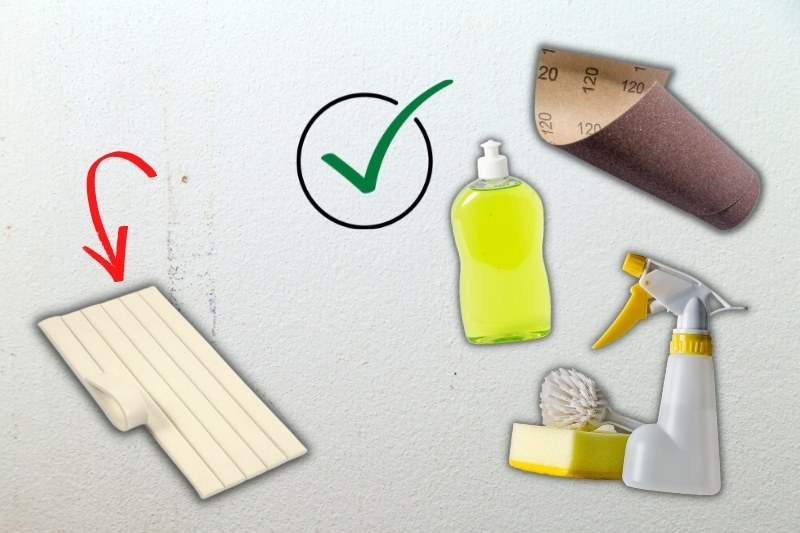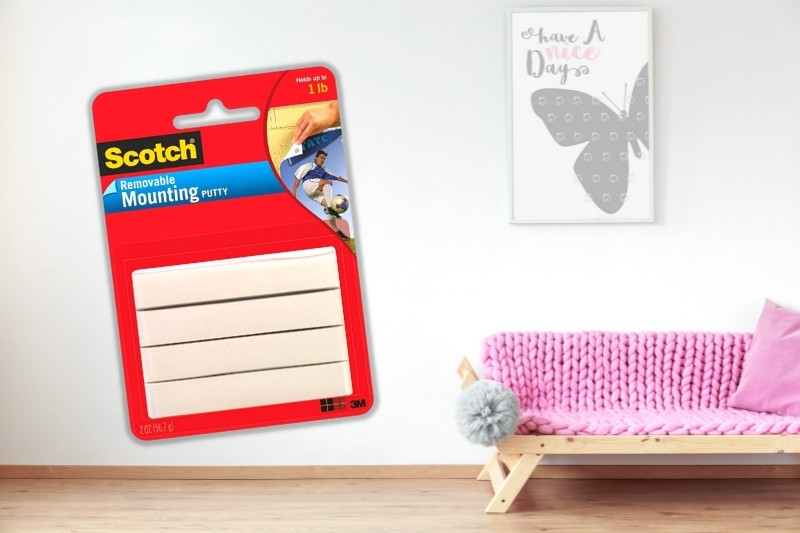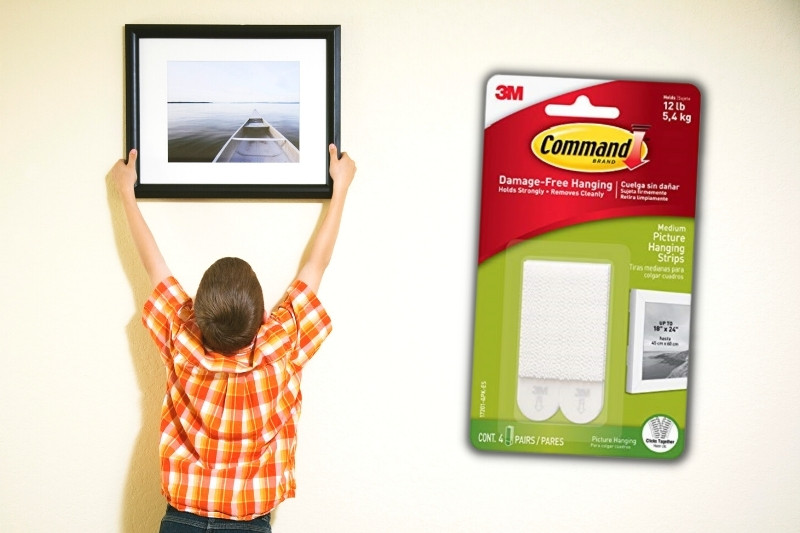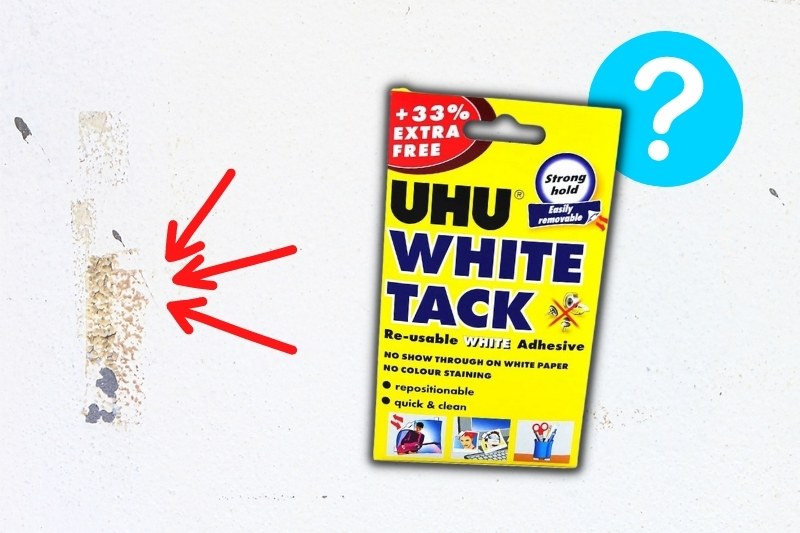Blu Tack has long been a popular way of sticking things to walls. However, it can leave blue marks on the surface and if the paint is too thin, it can cause peeling of the outer layer. White tack is often seen as a better alternative, but does that leave marks too?
If white tack does leave marks, are they removable? And how do you do this? All of these are valid questions that we’re going to answer for you today.
The simple answer is yes, the use of white tacks can often leave greasy marks on the walls. Although white tack is not going to leave blue-colored marks, these marks are still visible and need to be removed.
How visible the marks are depends on a few factors such as the type of surface.
Fortunately, these marks are not usually permanent. There are a few ways by which you can try removing these stains and we take a look at them here.
How to Remove White Tack Stains

1. Using dishwashing detergent
Pour a single drop of the dishwashing detergent that you commonly use for utensils onto a scrub brush. You can even use your old toothbrush for this purpose, but it will take a little bit longer due to its smaller surface area.
For added benefits, try using a detergent that has a citrus flavor to it, as they are the most effective in removing grease and oil stains.
Rub the paste in small circular motions on the stained areas. Start by moving in small circles and increase the diameter depending on how the paint takes it.
Finally, use a damp cloth to gently wipe down the detergent. Be careful not to scrub too hard otherwise you may remove paint.
2. Stain remover spray
You can use the usual stain removers that are commonly used in households. Citrus-based stain solutions work better on the walls and will make your life easier. You will also have to check if the spray affects your paint in any way.
Spritz a little on less noticeable regions for a patch test. If it works fine, spray the stain remover and carefully wipe in small circular motions using a paper towel.
3. Sandpaper
This is a more extreme solution when you either have spare paint or plan on repainting the room. This method will easily scrape away the white tack but it will also remove paint from the wall.
If you use fine sandpaper then the damage to the paint would be negligible. Apply a small amount of paint matching the color of the wall for an easy touch-up.
Alternatives to White Tack
If you are not happy with using white tack and would prefer trying alternatives, here are a couple of other options to consider.
Mounting putty

Mounting putty will adhere to any sort of surface and is a great non-greasy alternative. It will not damage your walls as it does not contain acid or solvents of any kind. This feature also makes it possible for you to use it multiple times over extended periods.
Hanging strips

These strips are plenty available on the market and will help organise your walls without damaging them. They also come with a small tab that you can pull when you need them removed from a wall.
The surfaces you can use them on include painted walls, glass, tile, metal, and drywall. They usually have a low weight capacity but multiple strips can be used for hanging decorative items and picture frames.
Conclusion
Yes, white tacks usually leave stains on the walls. There are several methods to remove the stains without damaging the walls and there are also some great alternatives. Hopefully, now you have all the info you need on whether or not white tack is the right solution for you.

I’m a mother of three who loves going on fun adventures with my family. With three little ones, I’ve learned the hard way how to keep a busy home clean! I want to share my tips and tricks to make your life as easy as possible.






